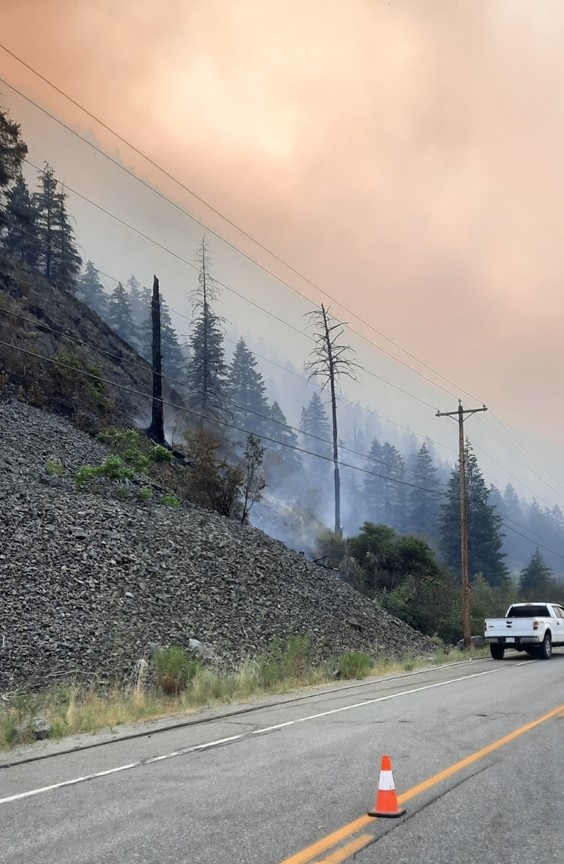
While the BC Wildfire Service (BCWS) doesn’t implement evacuation orders or alerts, we work closely with First Nations and local governments to recommend when they are needed.
An evacuation order means those in the area are at risk and must leave immediately. An evacuation alert means those in the area should be ready to leave on short notice. If you evacuate before or during an alert it is refered to as a voluntary evacuation.
Occasionally a wildfire can threaten lives and properties so quickly responders conduct what is called a tactical evacuation. This involves going door to door in an area and informing residents they must leave immediately.
Often, completing tactical evacuations or implementing evacuation orders is done with the assistance of other first responder groups such as police, search and rescue or even conservation officers.
The main reason BCWS makes recommendations is to ensure first responder and public safety is maintained.

When wildfires occur they are indiscriminate, and roads may be impacted by rolling debris and hazards such as danger trees or even have visibility hampered by smoke. Crews also often use roads to work from as control lines, if they are not clear of local traffic this can be dangerous.
Enacting orders and alerts also protect the public by removing them from a dangerous area before the impacts are felt, rather than have congested roads, trapped residents or vehicle incidents when fleeing.
The decision to enact orders and alerts is based not only on current conditions but also forecasted fire activity and behaviour, access to egress routes and potential impacts to infrastructure.
Wildfire activity is heavily impacted by weather conditions, which means fire activity can increase suddenly and rapidly due to wind, heat and dryness. The wildfire itself can contribute to these conditions.
You may also be in danger even if you can’t see the wildfire since it can spread quickly when embers are blown ahead of the fire. These embers can be carried for kilometres and start new fires between you and safety.
Sometimes an order may remain after a wildfire has passed through an area due to hazards remaining including danger trees, and damaged infrastructure. It can take time for repairs and restoration to be completed to allow access in a safe way.
More information on preparing for an alert or order can be found from PreparedBC.
Current alerts and orders are also compiled by Emergency Management and Climate Readiness on EmergencyInfoBC.ca.
